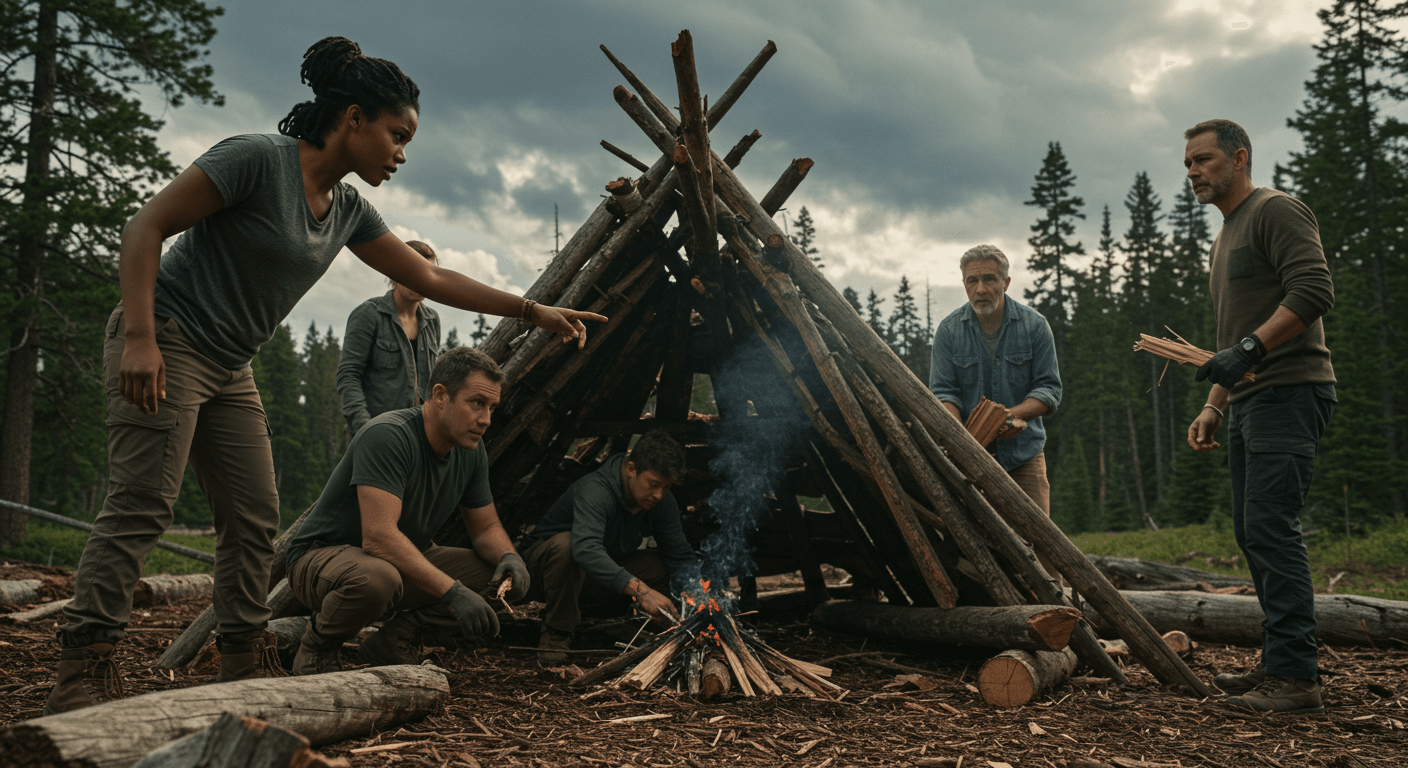Please Note: This post may contain affiliate links. If you click one of them, we may receive a commission at no extra cost to you. As an Amazon Associate, I earn from qualifying purchases.
Last Updated on November 2, 2025 by Kevin Collier
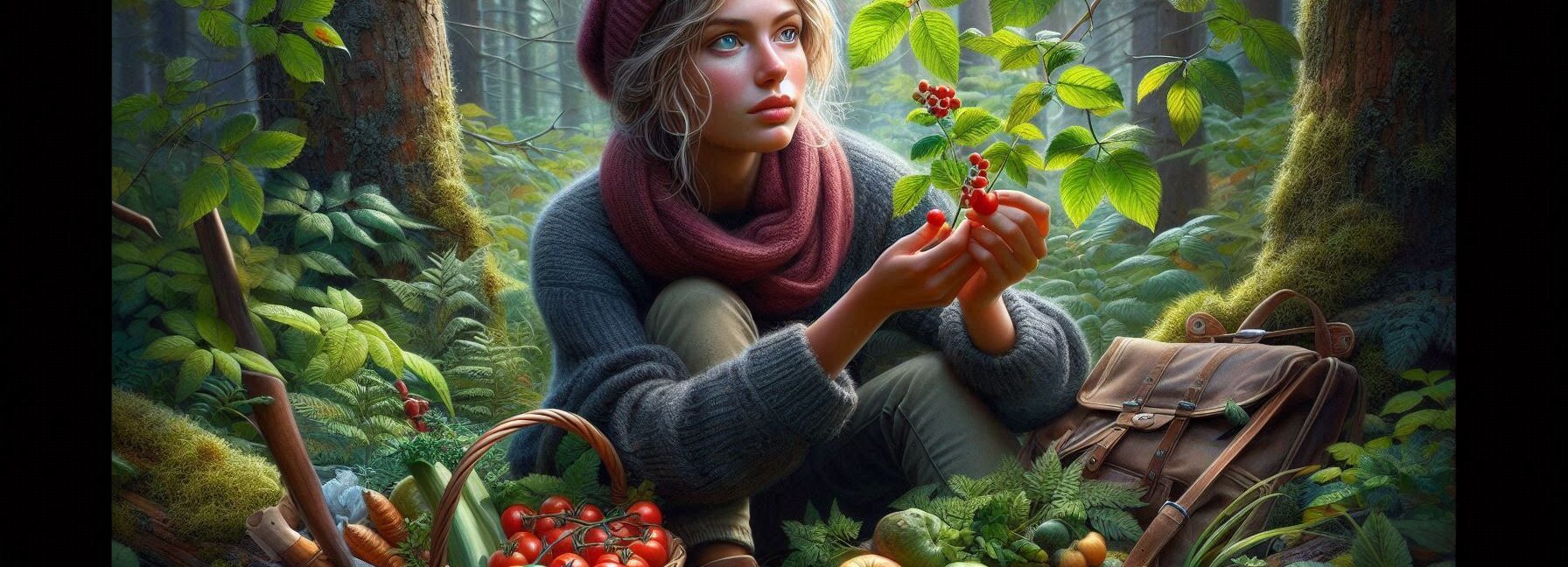
Top Takeaways and Key Concepts
- Learn local edible plants before foraging and carry a plant identification guide.
- Only eat plants you can positively identify; “when in doubt, leave it out.”
- Examine leaves, color, and texture carefully to distinguish safe plants from toxic ones.
- Harvest sustainably using scissors, taking only what you need to protect ecosystems.
- Avoid wild mushrooms unless you are trained, as many are poisonous.
You’re out in the woods. Trees are all around, the birds are chirping like they’re having a concert. Feels amazing, right? But then—your stomach growls. Loud. Like a bear waking up from a long nap.
Instead of grabbing a granola bar, you get this little spark of inspiration. “I could forage for food!” How cool is that? But hold on—we need some knowledge for this adventure.
Here’s the thing. Identifying edible plants is super important. It can lead to a yummy salad from nature’s garden or a really bad day if you pick the wrong thing. Let's avoid that nasty surprise, like something that makes your stomach twist!
Start with the basics. Some plants are easy to spot. Dandelions are everywhere! They make great greens. You can nibble on their leaves or toss them in that imaginary salad. Just wash them first, okay? And who doesn’t love a dandelion flower? They can be pretty tasty too!
Then there’s wild garlic. It smells amazing, and you can use it in your meals. You’ll find it near shady spots. If something smells like a delicious pizza, you’re in the right place!
Keep an eye out for berries. Blueberries are like little bites of happiness. But, wait—this part’s important. Always make sure you know what you’re picking. Some berries can be tricky. If you’re unsure, don’t take the chance. Stick to the safe ones.
You might find nuts too. Acorns can be a good snack once you prepare them. Just make sure you know how. Some folks boil them to get rid of the bitterness.
Sometimes stuff seems simple until it’s not. That’s where your survival skills really shine. Learning which plants are safe to eat is part of the fun. It's like a treasure hunt!
Fingers crossed you never have to eat just foraging food. But knowing how to find it makes your adventure way more exciting. Who knew a walk in the woods could feel like a cooking show challenge?
*** Shop for Survival Gear - Tools - Kits ***
Survival Gear - Bags and Backpacks - Knives - Boots/Footwear - Communication
Outdoor Cooking - Gloves - Hydration - Dry Boxes - Water Filtration Systems
Tents - Sleeping Bags - First Aid Kits - Multi-Tools - Flashlights - Fire Starters
Navigation - Survival Food - Night Vision - Headlamps - Stun Guns - Binoculars
Stay curious. Enjoy the process. Getting to know nature is an adventure, and a little knowledge goes a long way. Just think of it as a chance to blend in and thrive in the wild. You’ve got this!
The Basics of Foraging: Know Before You Go
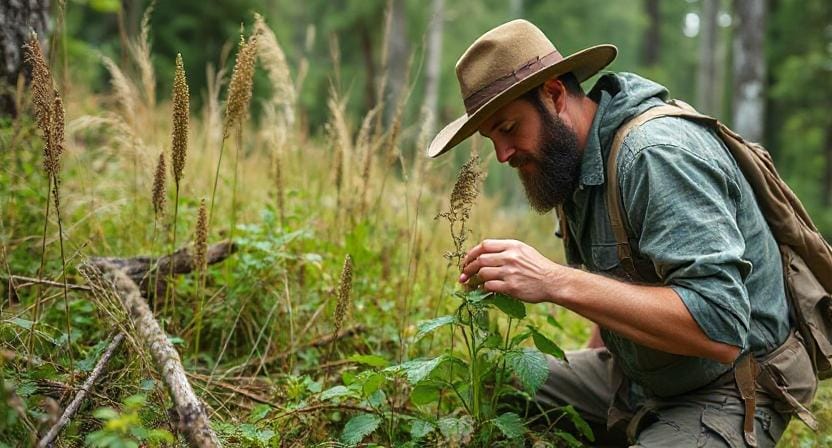
Before you jump into the plants like a wild animal, you need to know the basics of foraging.
To start, not every plant that appears good to eat is truly safe to eat. You wouldn't want to eat what you thought was a tasty berry just to find out it's more poisonous than my uncle after he drinks too many holiday drinks.
Learn about the plants that grow in your area before you start your journey into the realm of wild edibles. There are many guides, both online and in print, that can help you find these leafy riches before you plan your next meal.
Also, have a notebook on hand. Writing down notes or drawing plants will help you recall what's safe and what's not.
If you're not sure about something, it's best to be safe than sorry. “When in doubt, leave it out” should be your new slogan as you walk through nature's buffet line.
Tips for Identifying Keys: Pay Close Attention!
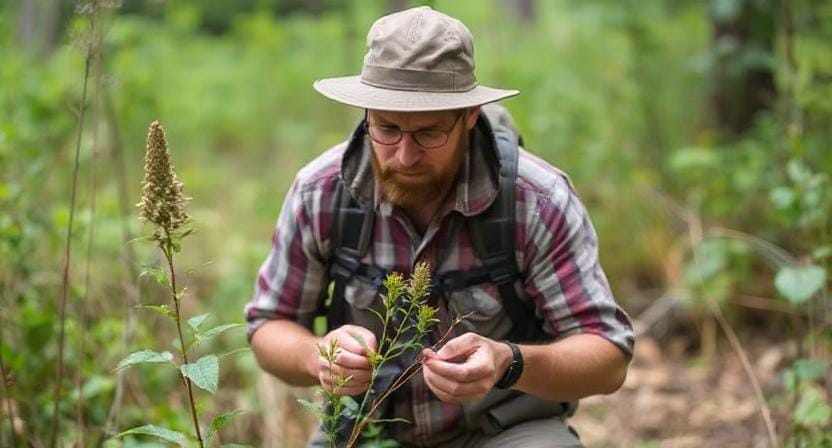
Now that you know the basics, let's go on to finding those yummy snacks! One crucial piece of advice is to pay close attention to the patterns on the leaves. Some edible plants have leaves that are arranged in a certain way, such mint with leaves that are opposite each other or some wildflowers with whorled leaves.
Take a closer look at the plant if you're not sure if it's lunch or poison ivy's cousin.
Color is another element to think about. Bright greens usually mean healthy leaves that can be safe to eat. But don't be fooled by flashy colors! Some pretty flowers are just as poisonous as my aunt's mystery dish at family gatherings. Before you eat any plant, always check it against credible sources.
By the way, texture is important too! Does rubbing a leaf between your fingers make it feel fuzzy? Is it slimy? Are you dry? These traits can help you tell the difference between species. And trust me, you don't want slimy unless you're going to make frog legs for dinner!
What to Look for in Common Edible Plants
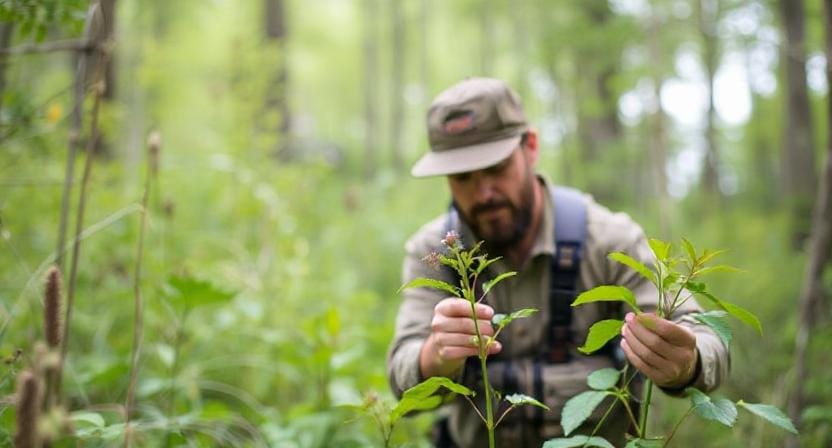
So now we're making progress! Let's speak about some common plants that you might find in the outdoors that you can eat. The first plant is dandelion, which is that annoying nuisance that people try to get rid of from their lawns.
Dandelions are full of good things for you and can be consumed raw in salads or made into tea. Just think about how cool it would be to tell your buddies back home that you've made gourmet food out of weeds!
Then there's wild garlic, which is also called ramps. It smells amazing and provides taste like nothing else. When spring comes and those little green shoots poke through the ground, pick them! They taste great when sautéed or added to pasta recipes. If only they grew directly next to pizza trees!
And don't forget about clover! The cute tiny flower with three leaves is lucky, and you can eat its leaves too! You may add crunch to salads by tossing them in, or you can use them as a garnish when you pretend to be holding a fancy picnic.
Safety First: Staying Away from Toxic Lookalikes
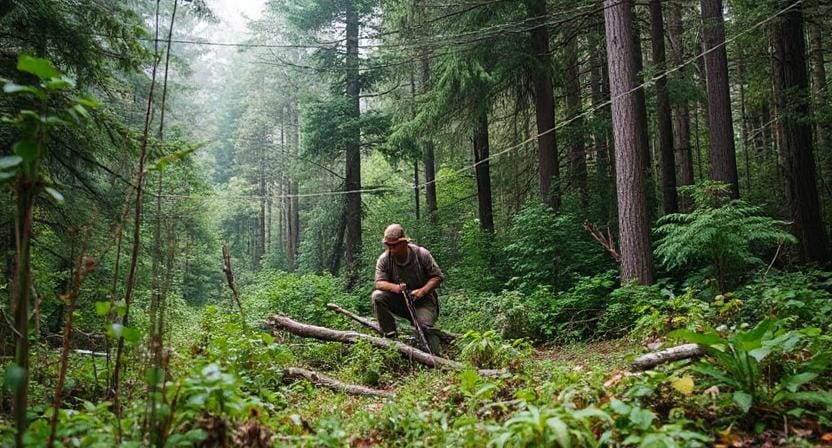
Even if our goal isn't as noble as stealing from the rich, survivalists everywhere need to know how to avoid harmful lookalikes, much like Robin Hood (but without the tights).
Poison ivy, for example, may ruin any outdoor activity faster than forgetting sunscreen at the beach! It might look like other safe plants, like cashew trees or some kinds of oak saplings, but if you touch it the wrong way, you'll be itching like mad before I can say “calamine lotion.”
Elderberry is another tough competitor against its toxic cousin. Some kinds have dark berries, while others have white berries that are full of toxins when eaten uncooked. So always check twice before eating anything that looks strange!
Let's see… You also need to be careful with mushrooms unless you are a trained mycologist, which most people are not. A lot of fungus seem alike, but they taste very different. So, unless you buy it already packaged from Whole Foods, don't eat it until you're sure.
Leave No Trace When You Harvest
Once you've found some tasty plants that are ready to be picked, it feels like winning nature's lottery. But you still have to do it the right way! Keep in mind that Mother Nature is not just here for us to enjoy; she also deserves respect.
Only take what you'll eat right away or store appropriately later; taking too much will hurt local ecosystems faster than I can watch all of my favorite program on Netflix in one sitting. Be careful not only where you go but also how much you take. This keeps things in balance so that future explorers can have the same kinds of adventures.
Also, isn't it interesting? Instead than tearing plants out of the ground, try using scissors. This way, they'll be happy and you'll be able to keep the environment safe for the future.
Conclusion: Enjoy Your Wild Feast!
We went on a fun excursion through the outdoors and learned about plants that we could eat without making a mess of things. Problems with your stomach? No, let's not do those!
With some practice and maybe a few mistakes along the road, you'll be able to pick plants with confidence in no time. Think about how you could amaze even Gordon Ramsay with your salad-making talents. Of course, there was no yelling or swearing!
Don't worry if your stomach starts to rumble the next time you're outside. Take a peek around. There are good things in nature waiting for you. The leafy greens and wild berries are good for you. You can make a salad with what you find, just think about it. Talk about cooking green!
But don't forget to watch out for mushrooms. They can be hard. Some are harmless, but some are scary! They can make you feel really ill. Everyone wants that.
Don't rush your learning. You may try foraging with a friend. It's nice to go on an expedition and learn with other people. Also, two heads are better than one, right? That manner, you can make sure that anything is safe to eat.
And it's fine to try new things. Before you pick a plant, taste a little bit first. It will tell you if it's good or if you should stick to granola bars next time!
There are always surprises in nature. It can be like a hunt for riches! So take your time. Enjoy collecting, tasting, and learning about the wild tastes that are all around you. Soon, you'll feel like a real survival expert, and everyone else will be amazed by how good you are. And maybe brownies won't even look as good anymore. Just thinking about your crazy salad makes you happy!
Frequently Asked Questions
Why is plant identification important before eating wild plants?
Eating unidentified wild plants can lead to poisoning, so proper identification ensures you only consume safe species.
What should I pay attention to when identifying plants?
Study leaf shape, texture, color, and growth pattern to distinguish safe plants from dangerous lookalikes.
Is it safe to eat wild berries?
Only eat berries you can positively identify as edible because many toxic berries appear similar to safe ones.
Are wild mushrooms safe to harvest?
Wild mushrooms should not be eaten unless you are highly trained, since many poisonous mushrooms resemble edible varieties.
How can I forage without harming the ecosystem?
Harvest small amounts, cut plants instead of uprooting, and leave enough behind so plants can continue growing naturally.
Should I carry a guide when foraging?
Yes, a plant guide or reference makes quick comparisons easier and improves your accuracy when evaluating unknown plants.
What is the basic safety rule for edible plant foraging?
If you are uncertain about a plant’s identity, do not consume it and choose a confirmed safe plant instead.
Suggested Resources:
Edible Wild Plants – https://www.ediblewildplants.com
Wild Food Adventures – https://www.wildfoodadventures.com
Foraging Guide – https://www.foragingguide.com

Kevin Collier is a seasoned survivalist and expert in prepping and homesteading, contributing to WiseSurvive.com. With a deep-rooted passion for self-sufficiency and outdoor survival skills, Kevin shares practical advice, strategies, and resources to help individuals prepare for any challenge. His informative articles cover a range of topics, from essential survival techniques to sustainable living practices, empowering readers to thrive in any situation. Whether you're a novice or a seasoned prepper, Kevin's insights will inspire you to take charge of your readiness and build resilience for the future.

